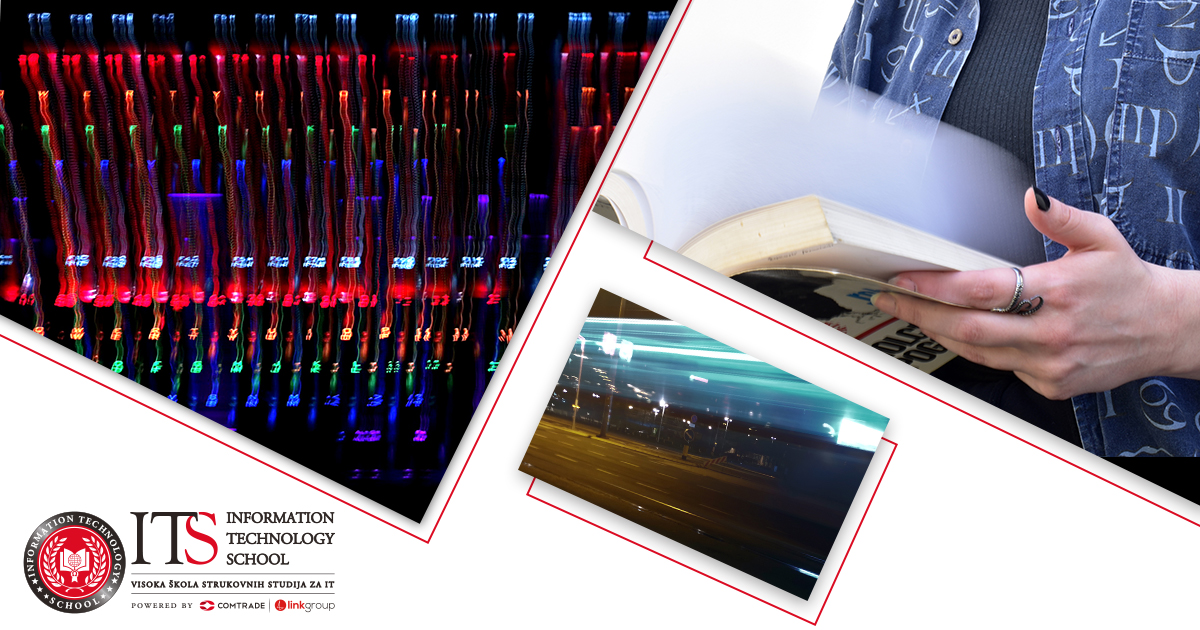
This spring, ITS students who are members of the Photo Club were given a task that required excellent knowledge of camera settings. They were told to make photographs on the subject of Long Exposure.
In photography, exposure refers to how much the camera’s sensor (film) is exposed to the rays of light. It is, in fact, the amount of light that enters the shutter. Longer exposure means longer time that the shutter will be open, capturing movement, which was the point of this task.
The image below shows an example where a model is leafing through a book. This action is very fast, and the author managed to capture the movement and achieve the desired effect in only half a second.
On the photograph, this movement will appear blurry, while other, static captured elements will be sharp. Since the shutter can remain open for several seconds (and, in extreme cases, even much longer), the use of a tripod is recommended to avoid blur on the static objects.
A frequent subject of long exposure photography is a night scene with moving vehicles’ headlights. Because of the dark and the speed, the vehicle itself is invisible – the sensor does not capture it. All we see are the light traces of the vehicle (image below).
This is also an interesting way to photograph water (fountains, waterfalls and other examples where water is moving) and people in motion (running, riding a bike…). To achieve the blurry, smeared effect, exposure needs to be long.
Another approach is not to use a tripod, but move the camera by hand and capture a static object. This creates the illusion that the object is moving, while it is, in fact, quite static. The following image shows a keyboard with lighting effects.
These examples showcase our students’ considerable knowledge and experience in photography. Using what they have learned, the members of the ITS Photo Club can produce a rich, creative portfolio. With their knowledge of raster and vector graphics editing software, each of them is a step closer to employment in the realm of design.




